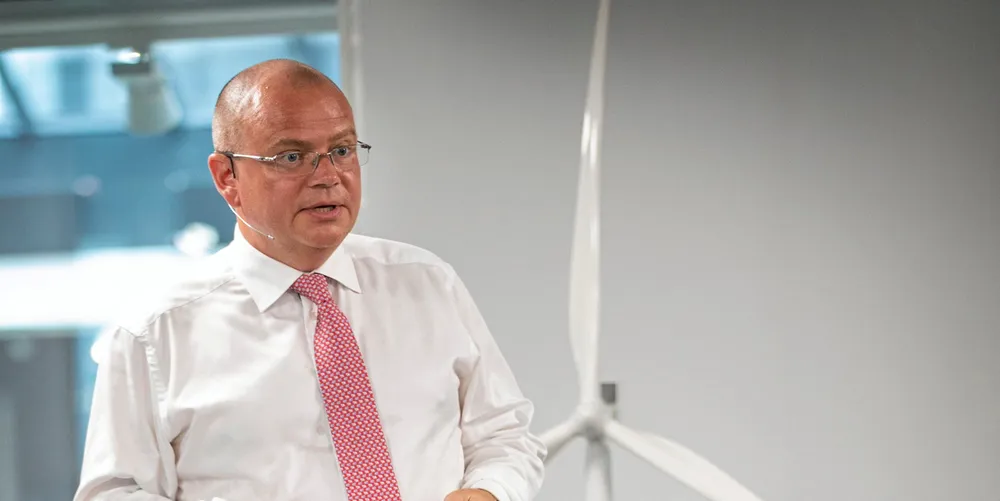'Market share is secondary' | Vestas will choose lower order volumes over profitability squeeze: CEO
Henrik Andersen assures investors that pricing top priority as Danish wind turbine giant sees order intake plunge in 2021

Vestas would rather see its volumes fall than compromise on profitability from turbine sales, chief executive Henrik Andersen told investors following the announcement of preliminary 2021 results that showed a sharp decline in order intake.
Asked whether the Danish wind giant fears a loss of market share as it attempts to push through higher turbine prices in negotiations with customers, Andersen said if the average selling price (ASP) of a turbine doesn’t cover the direct costs of a project, it doesn’t make sense to prioritise market share.
The “ASP is important, (but) at the end of the day, ASP doesn’t pay, but profitability pays”.
If negotiations leading to higher turbine prices “push out some of the order intake, then we will rather have a limited or a lower activity than… execute on potentially onerous projects which we won’t accept”.
Investors seem to appreciate Andersen's honesty.
Vestas shares after initial losses rose by 6.26% to DKr176.45 ($26.75) per share in early afternoon trading in Copenhagen, substantially more than the OMX Copenhagen 20 stock index of Denmark's most actively traded shares that went up 1.71%.
The company's shares had already fallen substantially in the year to date.
And while worse than anticipated, the utility's lower guidance for this year likely will mark a profitability bottom, said Jacob Pedersen, chief analyst at Denmark's Sydbank.
"The 2022 forecast should mark the bottom line for Vestas' profitability before the significant sales price increases create a profitability boost in 2023," Pedersen told investors in an analyst note.
Also, the poor preliminary earnings figures didn't come as a huge surprise after rivals Siemens Energy and GE Renewables in recent days had already reported disappointing results, he added.
Vestas earlier Wednesday said the average selling price of its turbines (both onshore and offshore) rose to €0.83m per megawatt for 2021, and €0.86m/MW in the fourth quarter of last year – a 21% year-on-year increase – the company acknowledged.
That pushed down its order intake to 13.9GW last year with a value of €11.6bn (€13.1bn), down from 17.3GW with a value of €12.7bn a year earlier.
Had Vestas known what it knew in the last quarter of 2021, the average selling price of its machines “for the (full) year should have been higher, because that’s a fair reflection of one of the challenges in the industry,” Andersen said, but added that the manufacturer cannot “re-price back in time”.
“So, beyond any doubt, we are increasing prices and we do the pricing that also [reflects] what is actually the current cost required to make our offer and the solution to customers across the board in Vestas.”
Higher turbine costs are likely to push up prices throughout the renewable energy value chain and for consumers.
The CEO added that with electricity prices in much of Europe in the past couple of weeks (or forecasted for coming weeks) near €400 per megawatt hour – more than 10 times higher than just 18 months ago – customers should right now be looking at hiking the levels of power purchase agreements (PPAs).
Andersen said the company expects that the current instability across its market will continue throughout 2022, and has built scenarios into its guidance that align with that uncertainty.